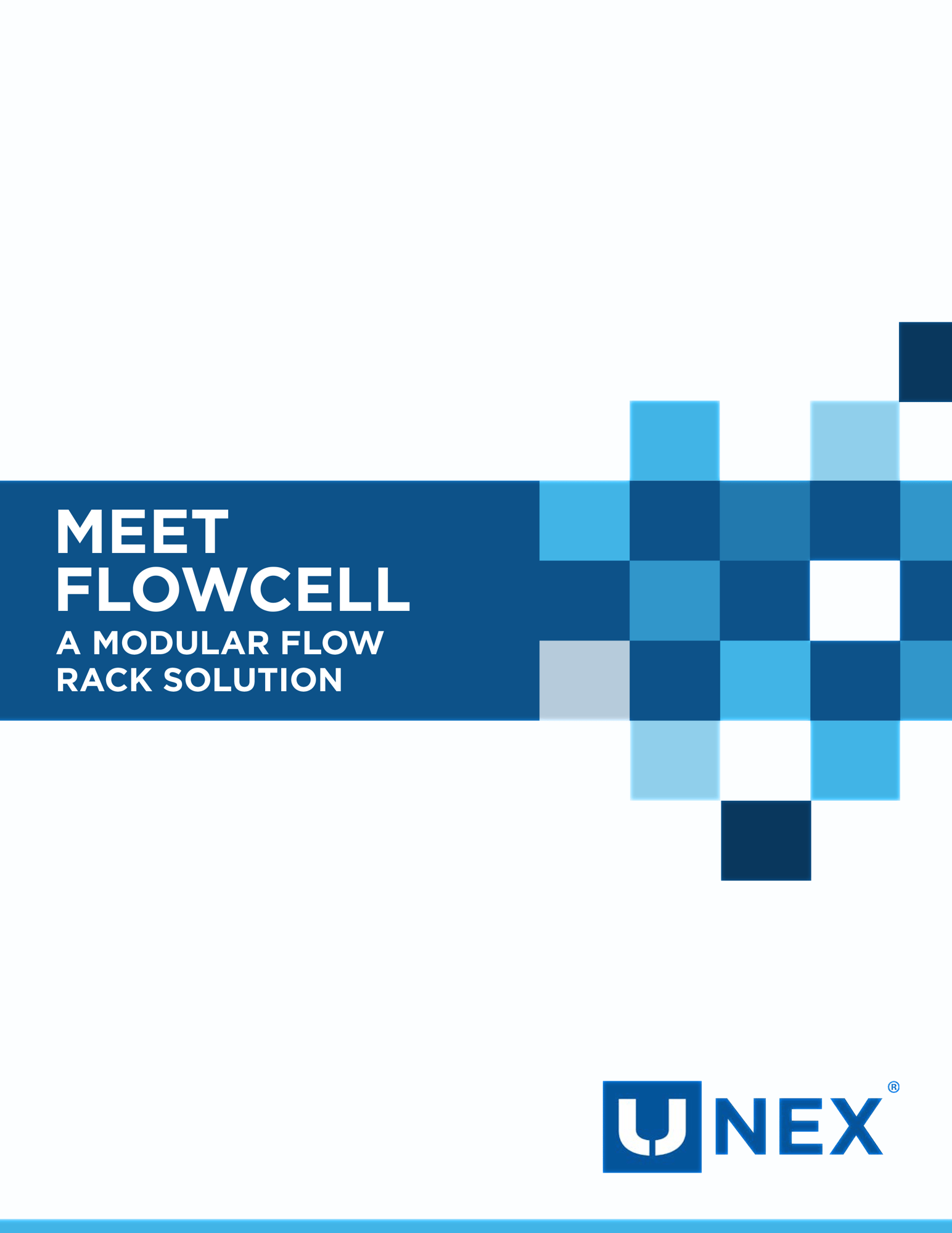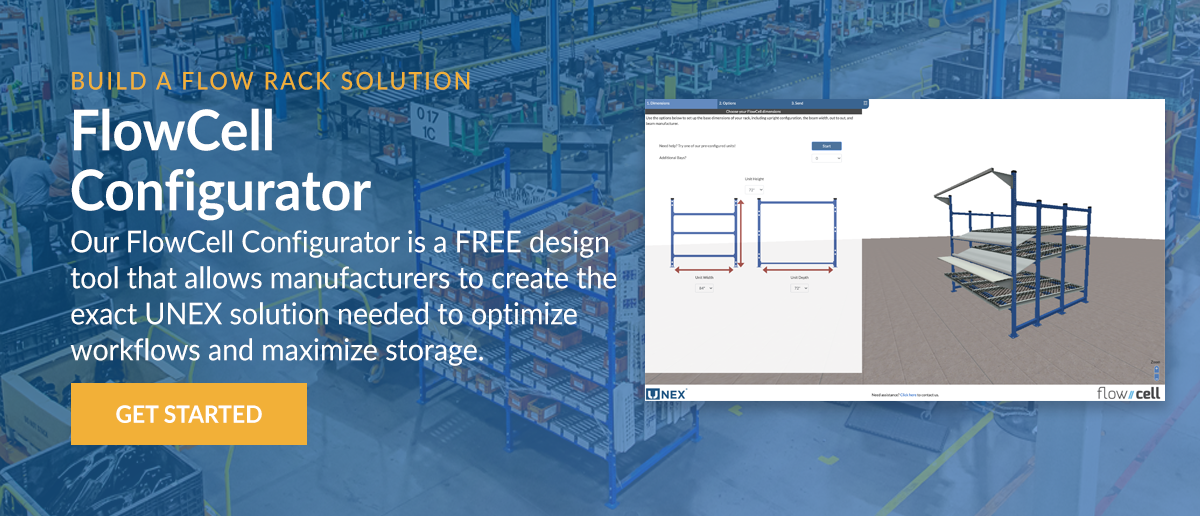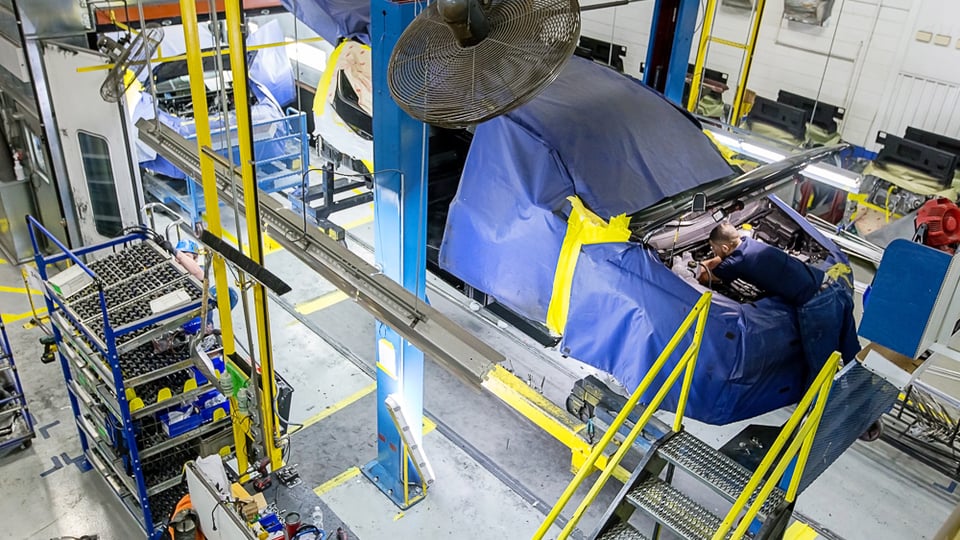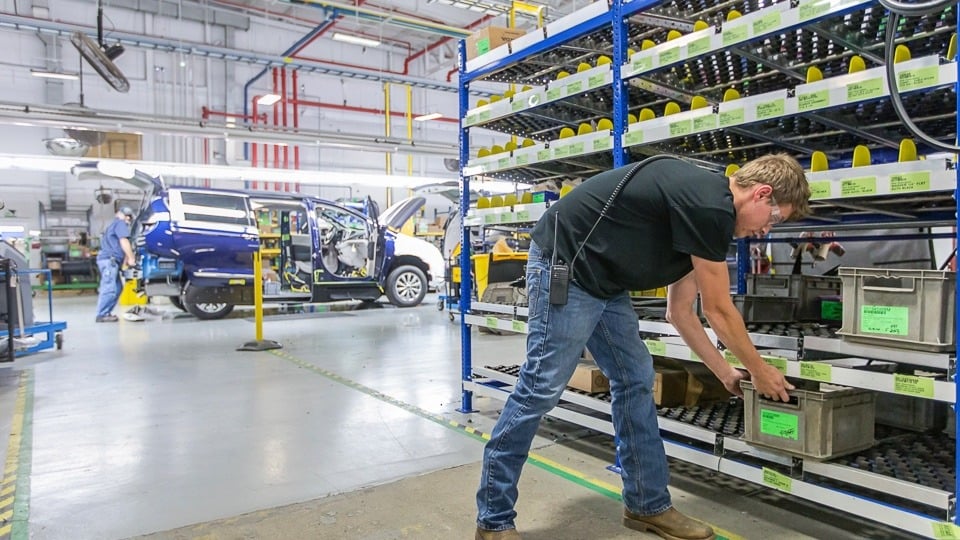Minimize Manufacturing Waste With Modular Flow Racks

Manufacturers are under constant pressure to increase throughput and adapt on a dime to changing demand, all while delivering high-quality products. That’s why many turn to lean manufacturing as a practical framework for driving efficiency and cutting costs. Lean principles identify and target seven core types of waste in production, but four are especially common on the factory floor: excess motion, waiting, inventory, and defects.
Addressing these issues starts with better material flow and smarter storage, and modular flow racks provide a practical, scalable tool for tackling manufacturing waste head-on. These systems reduce unnecessary movement, minimize bottlenecks, and make material handling more accurate and efficient through organized, efficient lineside storage.
Paired with a few proven best practices, modular flow racks can help align storage systems with lean manufacturing strategies. This helps operations run smoother and more cost-effectively while staying agile enough to adapt. Here’s how it works.

What Are Modular Flow Racks (And Why Do They Support Lean)?
Modular flow racks are gravity-fed storage systems that deliver parts and materials directly to the point of use, supporting the first-in, first-out (FIFO) flow that’s central to manufacturing processes. Their modular design enables manufacturers to easily reconfigure workflows to suit shifting production demands, whether they’re integrated into lineside workstations or used as mobile carts.
By supporting continuous flow, reducing unnecessary handling, and delivering materials exactly when and where they’re needed, modular flow racks create the scaffolding to support lean manufacturing principles. They help eliminate clutter and make more room for value-added tasks, establishing a more agile, waste-free operation. Let’s look at how this plays out across the four most common forms of waste.
1. Motion
Extra walking, reaching, and bending are significant sources of waste on manufacturing floors. Every extra step or awkward movement slows production and increases the chances of injury.
Modular flow racks address this directly by bringing products to the point of use, improving ergonomics and speeding up picking and assembly. Operators are free to focus on value-added activities rather than wasting energy on unnecessary movement.
2. Waiting
Waiting for materials or parts can bring production to a halt and disrupt workflows. In contrast, lean prioritizes continuous part availability at the line.
Gravity-fed lanes and pull-based replenishment, both key features of modular flow racks, keep inventory moving forward automatically so operators can always access what they need. The flexible configuration of flow racks also supports quick line changeovers and fast adjustments to meet changing production schedules.
3. Defects
Defects often stem from hidden damage, poor part organization, or the use of incorrect components. Modular flow racks help reduce waste in manufacturing by keeping parts clearly visible, well-organized, and better protected throughout production.
Their FIFO design ensures older inventory is used first, preventing outdated or compromised components from being included in builds. Having a cleaner presentation also helps operators spot issues with parts or builds, supporting lean’s focus on built-in quality and reducing rework or scrapped assemblies.
4. Inventory and Overproduction
Excess inventory locks up cash and often leads to overproduction. To address these issues, manufacturers must limit the space for parts and encourage just-in-time (JIT) delivery and consumption, both of which are hallmarks of modular flow rack design.
Plus, with clearer visual cues and controlled part quantities, operators can more easily identify issues instead of masking them behind excess materials. This lean approach keeps production more responsive and cost-efficient.
Discover how to boost productivity with modular flow racks. Download our Meet FlowCell guide!

Boosting Productivity Through Lean Manufacturing
While modular flow racks reduce specific forms of waste, their real advantage lies in their ability to strengthen the performance of the entire manufacturing system. Through steady, predictable part delivery, these lineside storage solutions support better production timeframes and balanced workflows across the entire facility. Without frequent stops or last-minute adjustments, teams experience a more reliable material supply that more naturally fits production rhythms.
Flow racks also improve coordination between upstream and downstream processes by making bottlenecks and supply issues immediately visible. Their modular design is foundational for making ongoing improvements, another core aspect of lean manufacturing waste reduction.
In other words, flow racks are much more than a simple storage upgrade. Deployed strategically, they help manufacturers create a more resilient, agile manufacturing system that supports continuous improvement for long-term success.

Best Practices for Implementing Flow Racks in Manufacturing
Installing modular flow racks is a first step toward updating your lineside storage and assembly workflows. But they’ll only take you so far if they don’t fit into your larger lean strategy and operational goals. Here are a few tips that will help you maximize waste reduction:
- Start with a value stream assessment: Map your current processes to pinpoint motion, waiting, or inventory waste. Identify exactly where flow racks can eliminate bottlenecks and expedite part delivery.
- Position racks at the point of use: Place racks near workstations to keep parts accessible and within easy reach.
- Integrate with JIT, Kanban, and 5S: Just-in-time production (making only what’s needed), Kanban signaling (visual cues for replenishment), and 5S (standard workplace organization methods) are additional lean tools for minimizing waste and improving flow. Integrating flow racks with these systems helps create a fully coordinated, efficient manufacturing environment.
- Involve operators and empower improvement: Let your team help with layout design and invite their feedback. Involving operators builds ownership and fuels ongoing improvements.
FlowCell Modular Flow Racks for Lean Manufacturing
 With FlowCell, UNEX has supported lean manufacturing initiatives for countless customers. Our modular flow racks are purpose-built to drive out waste across the entire production line. Designed for lineside storage, sub-assembly areas, and manufacturing supermarkets, FlowCell delivers optimized material flow right at the point of use.
With FlowCell, UNEX has supported lean manufacturing initiatives for countless customers. Our modular flow racks are purpose-built to drive out waste across the entire production line. Designed for lineside storage, sub-assembly areas, and manufacturing supermarkets, FlowCell delivers optimized material flow right at the point of use.
This system eliminates key forms of waste that frequently hinder productivity. Its ergonomic, angled presentation reduces excessive walking, reaching, and bending, minimizing motion and improving operator safety. FIFO replenishment from the rear creates a constant supply of components, eliminating waiting and unnecessary stoppages. Meanwhile, having defined storage limits promote JIT delivery and help expose any material issues.
FlowCell is also engineered with continuous improvement in mind. Operators can easily reconfigure parts arrangements without scrapping materials, perfect for supporting evolving product mixes or shifting line demands.
Durability isn’t sacrificed to achieve flexibility, either. FlowCell’s heavy-duty steel construction delivers long-term reliability, so operators can enjoy up to 50% more space utilization and 30% higher production efficiency for years to come.
Eliminate Waste with Modular Flow Racks
Flow racks offer more than a storage upgrade. They’re powerful tools for supporting lean manufacturing waste reduction. With better material flow and more ergonomic workstations, modular flow racks chart a course for continuous improvement and raising the quality level on the factory floor. Their flexibility enables operations to adapt to changing demands without compromising productivity or giving up valuable space.
Ready to explore how modular flow racks can support your lean strategy? Connect with UNEX to find a solution that helps your team become more productive and efficient.



